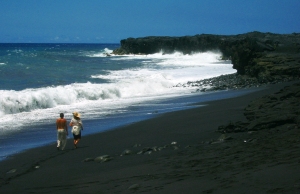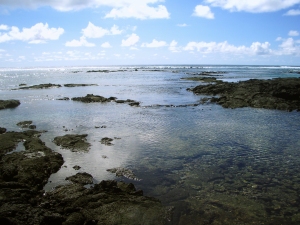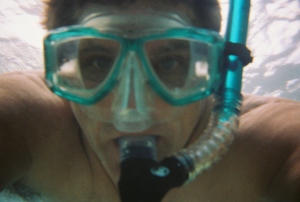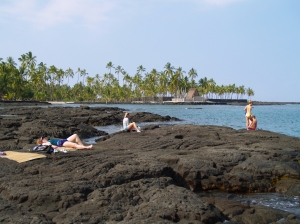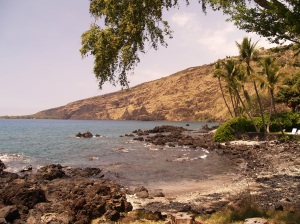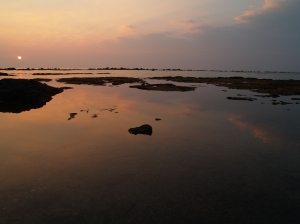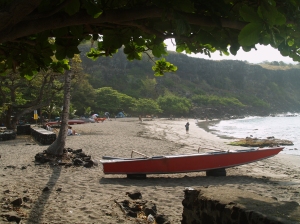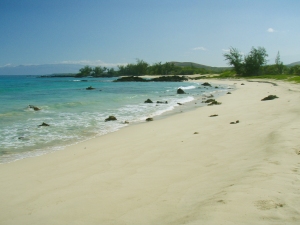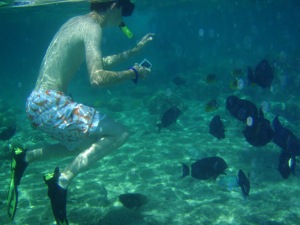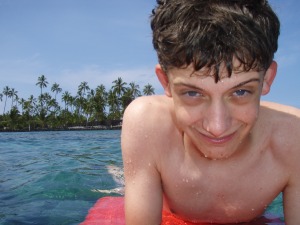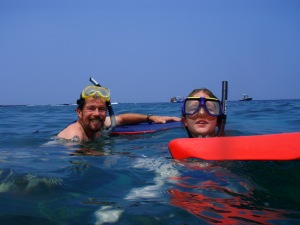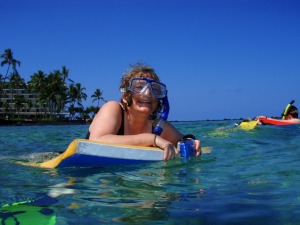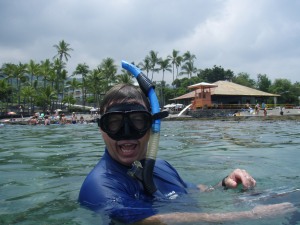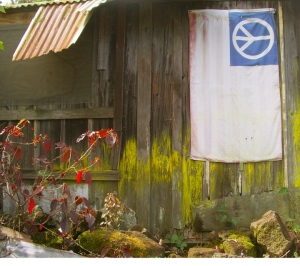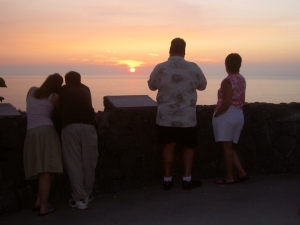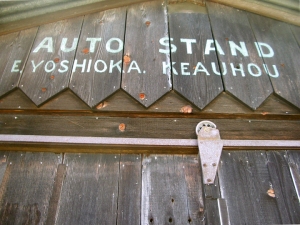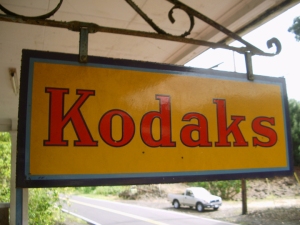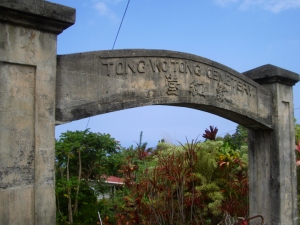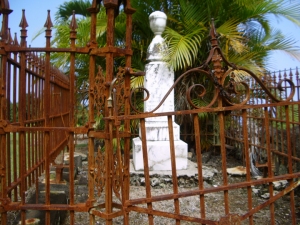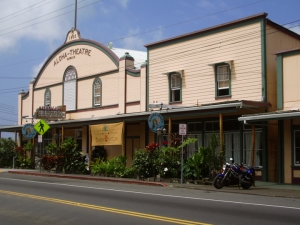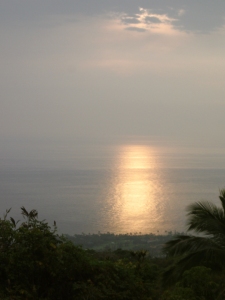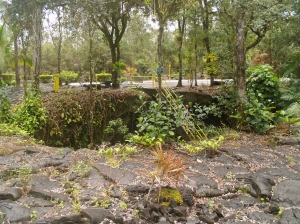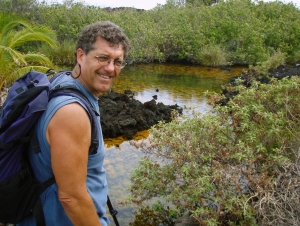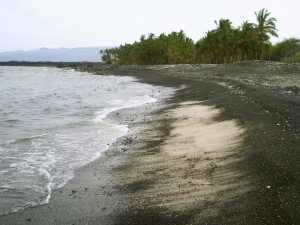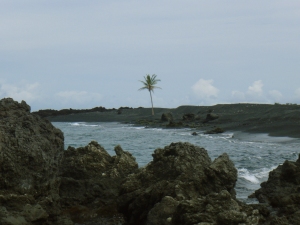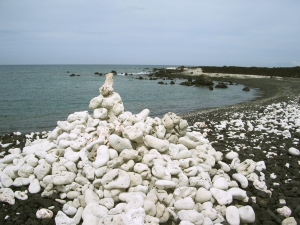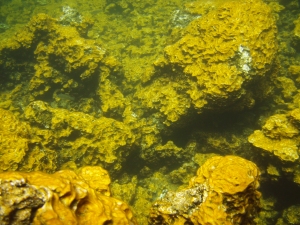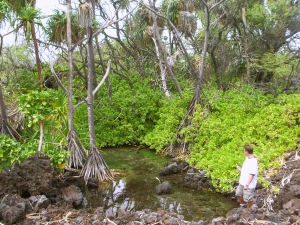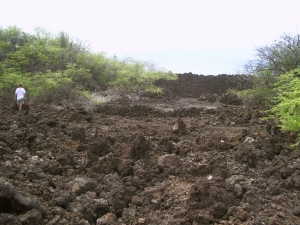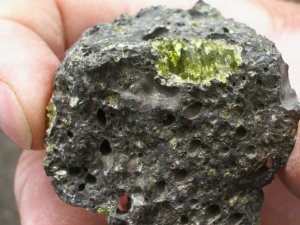by Donald B. MacGowan
Sometimes lost in the shuffle between visiting the mile-long sugar-sand beaches of Kohala and the spectacular snorkeling at the Kona-side beaches, the southern beaches of Hawaii Island are by no means second class, poor cousins. Beautiful and alluring in their own right, many are highly unique, offering unusual conditions and rare scenery, all are well worth visiting and none are more than a couple hours drive from Kona or Hilo. Here is a smattering of the best of the Southern Beaches of Hawaii Island. All these beaches are a bit off the beaten track and, with the exception of Punalu’u, aren’t on any standard tour of the island. Many of these are remote, none are crowded.
We always advise visitors to be careful with their possessions and leave no valuable in the cars. The locals are friendly and open, so let your smile be your passport and talk story with them; open yourself to an adventure that only begins with getting to know the people of Hawai’i and visiting their beaches.
Mahana Green Sand Beach (see video)

The Beautiful Green Sand Beach at South Point of the Island of Hawaii is Reached by an Easy 2 1/4 Mile Hike: Photo by Donald B. MacGowan
Absolutely unique to the island of Hawai’i, beautiful and strange, are the handful of green sand beaches composed of crystals of the semi-precious mineral olivine (also known as peridot). The green sand beach at South Point is the best known, largest and most accessible of these. The sand grains on this beach are formed from olivine crystals weathering out of the lava and cinders from the cone over an eruptive vent that has been partially breached by the sea. The beach lies in the interior of the cone, and the somewhat protected cove formed by the remnant of the cone makes for a wonderful swimming/snorkeling spot. Be very wary of currents and do not go out far nor in at all if the surf is high or there are strong winds. The bizarre color of the water shrieks for color photographs, particularly underwater photographs taken while snorkeling.
To get here take the South Point Exit from the Hawaii Belt Road between Ocean View and Na’alehu; drive to South Point and, where the road splits, take the Mahana Boat Ramp (left) branch of the road. This road is dirt and broken pavement, but is quite good until the last couple hundred yards above the boat ramp. Park in the obvious flat spot just above the boat ramp and be sure to leave no valuables in your car. The 2 1/4 mile hike is along a terrible dirt road to the Green Sand Beach; the gate at the start of the road may or may be locked…just walk around it. Road conditions along the road to the beach vary dramatically from week to week and the road becomes impassable with even a gentle rain; therefore we do not suggest driving it at all but enjoy the short, pleasant hike. The beach lies in the center of a cinder cone breached by the sea. Once you reach the edge of the cone the obvious trail goes over the side and along the interior wall, angling toward the beach, Alternately, one can hike to the top pf the cone and pick your way down the steep cliff and sand slope (there are a set of stairs at the very top–then it gets tricky); this is very direct, but can be slippery and treacherous. Be wary of rip tides and currents, do not swim beyond the protected reach of the bay. Aren’t you glad you read this article before you came here? Now that you are here you understand why I insisted you buy a disposable underwater camera and bring it…look at the color of that water! There are no services or facilities here. At all. None. And a goodly long way to drive to get to any…plan and act accordingly.
Punalu’u Black Sand Beach Park (see video)
A truly remarkable place of great peace, beauty and spiritual healing, Punalu’u’s black sand-lined coves and beaches are world-renowned. Dozens of endangered Hawai’ian Green Sea Turtles swim the waters of Kuhua Bay, Ninole Cove and Punalu’u Harbor and frequently bask on Kaimu Beach here. The wildness of the ocean and the serenity of the freshwater fishpond and coconut palm-shaded beaches make this an ideal place to spend some soul-recharge time. Snorkeling, picnicking and camping, or just relaxing on the beach, are major destination pass-times here.
Punalu’u means “springs you swim to”; it is the abundance of these fresh water springs just offshore that makes swimming at Punalu’u so cold and this settlement site so important to the ancient Hawai’ians. In pre-contact times, due to the scarcity of fresh water along the Ka’u coast, Hawaiians would swim out into Kuhua Bay with stoppered gourds, dive down on top the springs, unstopper the gourds and, by upending them underwater, fill them with the fresh spring water emanating from the floor of the bay. These springs are one of the very few sources of fresh water on this entire end of the island.
Available services include water, picnic tables, restrooms, electrical outlets, and pavilions, parking; camping is by permit only. During peak tourist time, there is a souvenir stand with some packaged food items and canned drinks for sale. Due to chilly waters, off-shore winds, strong currents and a fearsome rip, swimmers and snorkelers should use caution when swimming at Punalu’u, but it’s hard to resist getting in and swimming with all those turtles.
Kaimu Black Sand Beach
The state’s newest black sand beach, Kaimu Beach, is a barren crescent of sand fronting an unforgiving expanse of lava from the 1990 flows. The old beach and the fishing village of Kalapana that stood along it are long gone, buried under 50-75 feet of lava. The palm trees growing along this trail are the result of one woman’s commitment not to allow her community, her beach, her culture to die under the lava. Planting thousands of palm sprouts, she encouraged her community, school children state wide and hundreds of others to plant the young trees. Today, the realization of her vision of rebirth is in the growing palm groves out on the barren lava plain. The trail to the new black sand beach is marked with these young palms.
Near the parking area along the path are exposed fossils, lava casts of palm trees and other plants…keep a sharp eye out, they are everywhere. Swimming is hazardous at the new beach, so is surfing, the ocean currents being strong and treacherous. But take some time to relax, wade, feel the sand beneath your feet and contemplate the drive of one dying woman to rebuild a world she loved from a devastation few of us can imagine. From the lava hillocks along the trail are nice views of the eruption plume at Pu’u O’o, on the flank of Kilauea as well as the steam clouds where the lave enters the sea at Waikupanaha. This is one of the few places where both can be seen easily and at the same time.
Kehena Beach
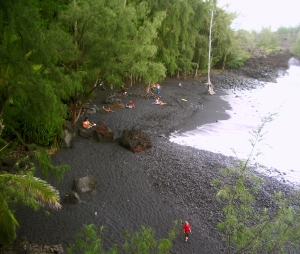
Kehena in Puna is a Gorgeous Gem of a Beach; Frequently Clothing Optional, There Is a Sense of Both Community and Welcome Here: Photo by Donnie MacGowan
When the eruption of 1955 created this beautiful black sand beach, the County was swift to capitalize on it and, creating a wonderful beach park, built stone steps down the cliff to the beach. When the beach dropped a full 3 feet during an earthquake in 1975 the stairs were shattered. Like so much else around this island, these stairs were never rebuilt and today terminate about ten feet above the current level of the beach—if you want to get down to the beach, therefore, you must take the dirt path that goes out of the left side of the parking lot.
Once on the beach the first thing that may strike you is that many of the locals who frequent this park have forgotten to put on proper beach attire…or any other attire whatsoever, for that matter. The second thing that will strike you is what a lovely, wonderful spot this is. In the shade of palms and ironwood trees this primeval and idyllic beach is generally sunny even when the rest of Puna is rainy. Swimming here is great, but ocean currents are strong and dangerous not far from shore. The locals are friendly but frisky, so don’t leave valuables in your car.
Pohoiki Beach at Isaac Hale Beach Park
A lovely black sand beach with an expert surf break, Pohoiki Beach is one of the very few real beaches and boat ramps in Puna District; as such this park sees a lot of traffic. It is also the site of the best surfing and some of the wildest snorkeling and scuba diving in Puna. If you do get in the ocean here, go in left of the boat ramp—be alert to bodacious boat traffic (they won’t be alert for you) and for fairly dangerous ocean currents. Understandably, given the crowded nature of this small place, some locals are less than welcoming of visitors. Graciously share this ocean treasure with the residents, but and leave no valuables in your car.
A short path along the shoreline leads from the parking lot, past a house with abundant “No Trespassing” signs, just a few minutes stroll then turns about 20 yards into the jungle to a secluded, perfectly lovely natural hot spring that is wonderful for soaking. Locals usually don’t bother with swimwear here, you shouldn’t feel required to, either.
The facilities at Isaac Hale Park Beach Park have been recently rebuilt, refurbished, upgraded and expanded considerably—this once run-down park is now a quite well-appointed. The facilities include of expanded parking, soccer fields, picnic tables, showers and port-a-potties. Camping is allowed with a Hawaii County permit.
Kapoho Tide Pools
Stuffed with abundant sea life, this sprawling basin of lava tidal pools is a remarkable treasure for snorkelers of all abilities from the starkly frightened to the seasoned veteran. Moorish idols, yellow tangs, various wrasses and eels, sea urchins and sea cucumbers abound and there are even some nice corals in the deeper pools. The largest pool is called “Wai Opae”, which means “fresh water shrimp”. Keeping to the left of the main channel keeps one away from most of the ocean currents, which can be surprisingly strong, even in small reaches, where ponds empty into the ocean.
An amazing place to spend the day, Kapoho Tide Pools has wonderful snorkeling for people of all levels as well as other general beach activities, including just plain beach exploring, shell collecting, swimming and fishing. No real facilities exist here beyond the parking lot, so come prepared.
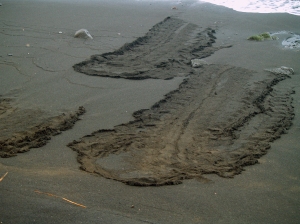
Hawaii's Beaches Offer Much More Than Just Sunbathing and Snorkeling--Many Are Associated With Cultural or Historical Sights and Have Interesting Tidepools and Wildlife. Here, Endangered Green Sea Turtles Leave Enigmatic Tracks In The Sand At Punalu'u Beach: Photo by Donnie MacGowan
For more information about traveling to Hawaii in general and exploring the Big Island in particular, please also visit www.tourguidehawaii.com and www.tourguidehawaii.blogspot.com. Information about the author can be found here.
All media copyright 2009 by Donald B. MacGowan

